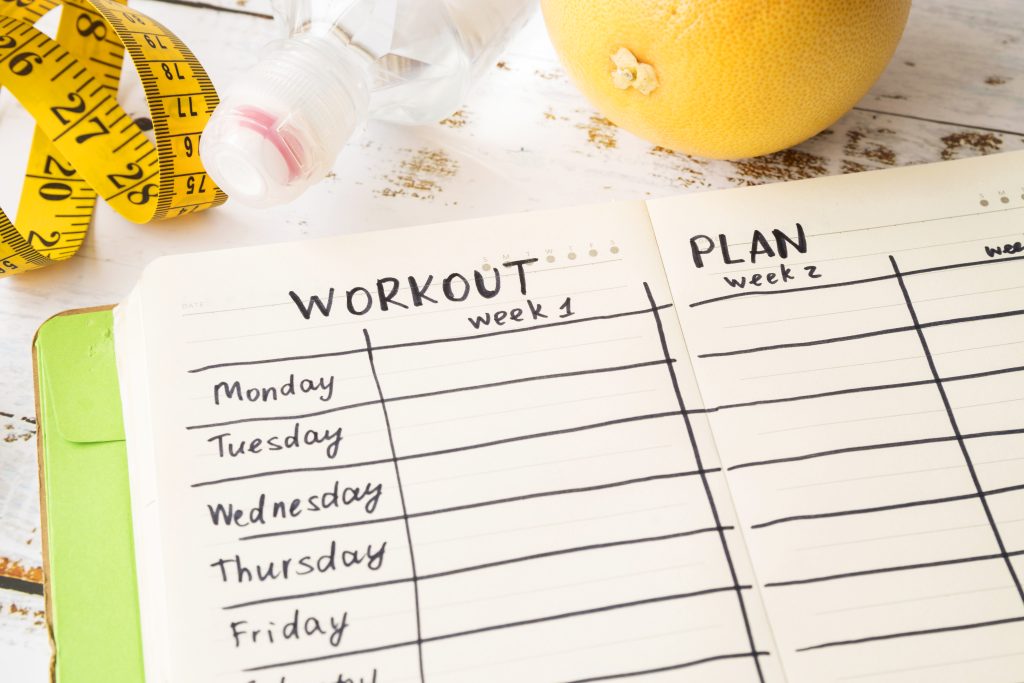Fitness Plans That Adapt to Your Schedule
Natalie Brooks August 18, 2025
Finding time for fitness can feel like a balancing act. Between work, family, and daily responsibilities, many people struggle to maintain a consistent exercise routine. That’s why fitness plans that adapt to your schedule have become one of the most talked-about trends in wellness. Instead of rigid programs, these flexible fitness strategies allow individuals to tailor workouts around their unique lifestyles. From micro-workouts to hybrid training apps, the wellness industry is shifting toward personalization, making it easier for anyone—no matter how busy—to prioritize their health.
This article explores how adaptive fitness plans are transforming wellness, what tools are driving this change, and how you can create a schedule-friendly plan that works for your life.

Why Flexible Fitness Plans Are Gaining Popularity
The traditional “one-size-fits-all” workout model is becoming outdated. People want options that fit their schedules, energy levels, and goals. The rise of remote work and hybrid lifestyles has highlighted the need for wellness routines that are not tied to a fixed location or strict time commitment.
Recent surveys show:
- More than 50% of adults in the U.S. say lack of time is their biggest barrier to exercise (Centers for Disease Control and Prevention, 2023).
- Shorter, flexible workouts are proving to be just as effective as longer sessions, especially for improving cardiovascular health and strength (American College of Sports Medicine, 2022).
- Fitness apps and digital platforms have seen exponential growth, with over 400 million users worldwide in 2024 (Statista, 2024).
These shifts show why fitness plans that adapt to your schedule are becoming a cornerstone of modern wellness.
Emerging Trends in Wellness-Focused Fitness Plans
1. Micro-Workouts for Busy Schedules
Short, high-impact workouts—sometimes as brief as 10 minutes—are proving to be effective. Known as “micro-workouts,” these sessions focus on efficiency, often combining bodyweight exercises, cardio bursts, or resistance training in a compact format.
Why it works:
- Fits easily into a lunch break or morning routine.
- Encourages consistency over intensity.
- Backed by research showing even small amounts of activity improve health outcomes.
2. Hybrid Fitness Models
Hybrid fitness—combining in-person classes with digital access—is reshaping how people approach training. A person might attend a yoga studio once a week while using a digital app for strength training at home.
This model offers:
- Flexibility across different locations.
- Access to expert-led sessions when convenient.
- A mix of social connection and solo practice.
3. On-Demand and AI-Powered Coaching
Technology is playing a major role in adaptable fitness plans. AI-powered platforms can create personalized routines that adjust based on your performance, time availability, and recovery needs. Apps like Future, Fitbod, and Apple Fitness+ are examples of tools making fitness adaptive and accessible.
Benefits include:
- Real-time adjustments based on feedback.
- Personalized progression to prevent plateaus.
- Access anytime, anywhere.
4. Workplace Wellness Integration
Employers are increasingly offering fitness perks as part of wellness programs. These include access to online platforms, discounts on gyms, and flexible “movement breaks” built into workdays. This trend reflects the growing recognition that fitness isn’t separate from productivity—it’s part of it.
5. Outdoor and “Flexible Location” Workouts
Many people are moving away from traditional gyms and into more flexible spaces. Running clubs, outdoor bootcamps, and park yoga sessions allow individuals to fit fitness into their schedules without the commute.
How to Create a Fitness Plan That Fits Your Schedule
Building your own flexible wellness plan doesn’t have to be complicated. The goal is to make fitness realistic, sustainable, and adaptable.
Step 1: Assess Your Schedule
Look at your daily and weekly routines. Identify “hidden windows” where you can add 10–30 minutes of activity—whether in the morning, between meetings, or before dinner.
Step 2: Choose Your Training Style
Pick a mix of formats that suit your preferences and time availability:
- Short HIIT sessions for cardio and fat-burning.
- Strength training 2–3 times weekly (can be bodyweight or weights).
- Mobility and flexibility sessions (yoga or stretching).
Step 3: Use Tech to Stay Consistent
Leverage fitness apps or trackers to:
- Adjust your workouts dynamically.
- Stay accountable with reminders.
- Track progress over time.
Step 4: Stay Flexible
If you miss a workout, don’t stress. Swap it for a shorter session later or adjust your week. The strength of a schedule-friendly plan lies in its adaptability.
Step 5: Combine Wellness Practices
Pair fitness with other aspects of wellness for a more balanced approach:
- Hydration goals.
- Mindfulness or meditation.
- Sleep routines that support recovery.
The Wellness Benefits of Schedule-Friendly Fitness
Adapting fitness to your lifestyle isn’t just about convenience—it enhances long-term health and motivation.
- Consistency Over Perfection: Flexible plans reduce guilt and increase adherence.
- Stress Reduction: Workouts become a form of relief instead of another chore.
- Holistic Wellness: By aligning exercise with energy levels, sleep, and recovery, individuals see broader benefits beyond physical health.
Expert Insights
Health professionals increasingly emphasize flexibility in fitness. According to the American Heart Association, any activity—even in short bursts—contributes to cardiovascular health. Similarly, research published in the Journal of Applied Physiology highlights that breaking exercise into smaller sessions can provide the same benefits as one continuous workout.
This evidence reinforces that fitness plans that adapt to your schedule are not just a convenience—they’re a legitimate pathway to wellness.
Conclusion
Wellness today looks different than it did even five years ago. Instead of rigid routines, people are choosing fitness plans that adapt to their schedule, supported by technology, workplace initiatives, and flexible approaches like micro-workouts. This shift is helping more individuals stay consistent, lower stress, and integrate fitness as a natural part of daily life.
The future of fitness is not about squeezing into someone else’s plan—it’s about creating one that fits seamlessly into your own, sustainably, effectively, and with balance.
References
- Centers for Disease Control and Prevention. (2023). Physical activity facts. Available at: https://www.cdc.gov (Accessed: 18 August 2025).
- American College of Sports Medicine. (2022). High-intensity interval training: Research and application. Available at: https://www.acsm.org (Accessed: 18 August 2025).
- Statista. (2024). Number of fitness app users worldwide from 2017 to 2025. Available at: https://www.statista.com (Accessed: 18 August 2025).







